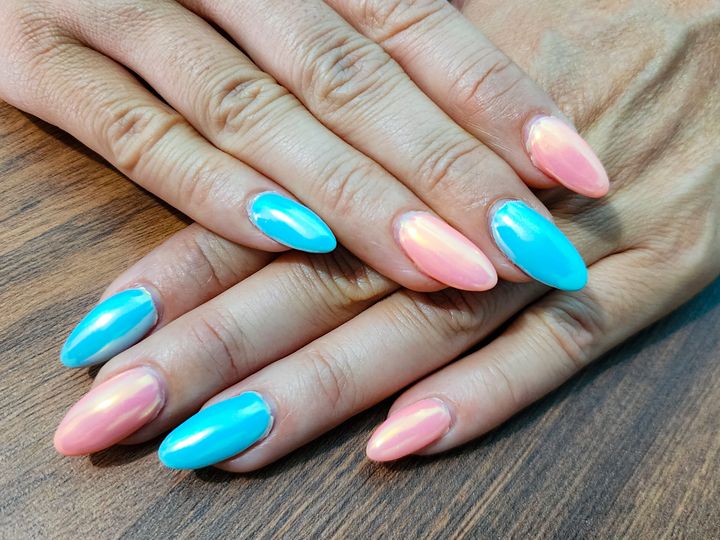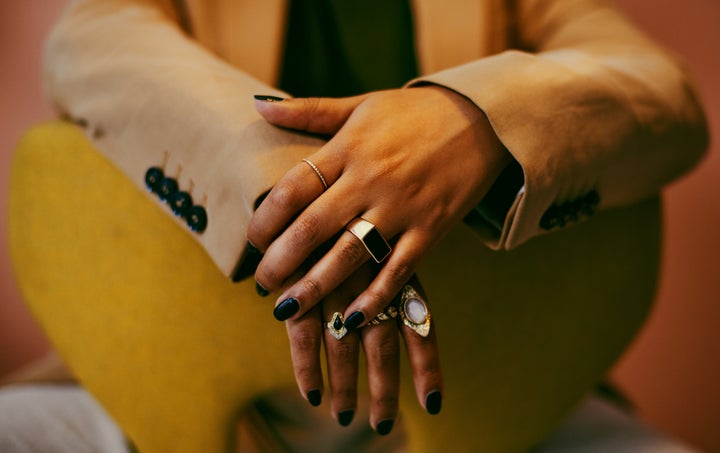
More and more people are turning to press-on nails because of their affordability, convenience and general aesthetics. Many popular brands, including OPI and Olive and June, have press-on varieties, in addition to companies that specifically specialise in press-on nails like Glamnetic and Clutch Nails.
The designs are often pretty intricate, resembling an oft-expensive hours-long manicure session at the nail salon. Suffice to say, it’s easy to see why these quick, affordable manicures are popular among many.
But, as with anything that goes on your body, it’s normal to question the safety, and dermatologists have thoughts on that.
“Overall, I think press-on nails are a nice option and I think they definitely are quick and easy relative to a bunch of other things that are out there ... with gel, powder, dip and all that sort of stuff,” said Dr. Lauren Penzi, a dermatologist with MDCS (Medical Dermatology & Cosmetic Surgery) Dermatology, which has practices in New York and New Jersey.
There are downsides, Penzi added. “They can be pretty bad for your nail health in general,” Penzi said.
Just how bad? Here’s what experts say — and, if you do choose to use them, some tips for using press-on nails properly.
Allergic reactions can occur.
According to Penzi, it’s not rare for folks to have an allergic reaction to the glue that adheres the press-on nail to your actual nail.
Common adhesive ingredients that irritate and cause allergic reactions include tosylamide, acrylate, vinyls and polyesters, Penzi said. These reactions generally result in red, itchy skin, she noted.
Dr. Jasmine Rana, the director of the nail disorders clinic at Stanford Health Care, added that hand eczema — scaly and itchy skin — can also occur. What’s more, the eczema can sometimes transfer to other parts of the body, Rana said.
“So, what that means is ... if you touch your face or your neck, it can show up in those areas. We’ve seen it on the eyelid, the face, the neck, the arm, etc.,” Rana added.
If you notice discomfort, itching, stinging or burning, Rana said it’s important to see a dermatologist, as you may be having an allergic reaction or general irritation. Additionally, she said you want to remove the press-on nail (or whatever nail product is causing irritation) in that situation, too.
And so can infections.
“Unfortunately, yeasts and bacteria and other types of organisms can get trapped underneath the nail, and this could happen just from everyday handwashing as [the press-on nail is] loosening up a little bit or if the adhesive isn’t applied to a clean nail, for example,” Rana explained.
While there are treatments for most nail infections, this is not the case for all types of infections.
“Depending on how advanced [the infection is, it may not be able to be treated], or sometimes [infections or allergies] induce permanent changes that can’t be reversed with antifungal or antibacterial treatment,” Rana said. “So, that’s certainly a big caveat.”
“We see this often in nail fungal infections, for example, where the nail plate thickens and becomes lifted off the nail bed. Anti-fungal treatment may be able to eradicate the fungus, but the thickness and lifting will sometimes persist,” stated Rana.
This can create a cycle of reinfection, Rana noted, “since the nail is now more susceptible to entry of pathogens.”
“The other thing to consider is that treatment often takes months, because of the slow growth rate,” she added.

The removal process of press-on nails can lead to issues like damaged or brittle nails.
“The last thing is certainly they can damage your nail plate, just from them being pressed on, ripped off, all that sort of stuff,” Penzi said.
Nail plate damage can be really painful and can lead to issues like nail weakness, and, in extreme cases, can cause the nail plate to separate from the nail bed, according to Penzi.
Additionally, taking off your press-ons can lead to brittle nails and nail breakage, Rana said. “A lot of that probably is related to the removal process to some degree because it tends to be a bit harsh.”
Additionally, as mentioned above, the tools needed to dissolve the press-on nail adhesive can be damaging, too, resulting in issues like irritation or allergic reactions.
One major no-no? Gel-curing your press-on nails.
Many TikTok users have posted about gel-curing press-on nails, a hack that’s popular because it helps press-on nails stay on longer.
Essentially, gel-curing involves using a UV light (which is normally used for gel manicures) to cure a base of gel polish underneath your press-on nail, which creates a better adhesive for the press-on nail.
“I think that’s an area that we need to be a little careful about because there have been a lot of allergies from incomplete curing,” Rana said. “If you incompletely cure it, even though it may look solid, if it’s not, then unfortunately we’re seeing a lot of rising rates of allergy.”
Overall, regular nail polish is preferable.
“The safest thing for nail cosmetics is just traditional nail polish,” Rana said.
“And, if you must do press-ons —at least the traditional ones that require adhesive — wear your [actual nails and press-on] nails short, because if they’re too long, especially during everyday wear or even through the removal process, it can be more likely to cause breakage,” she said.
Rana said that you should also think about the manicure removal process.
“Basically, I would say if acetone, a sander or a file is required for removal, it’s a good bet that those [are] more likely to result in potentially brittle nails,” Rana said.
Acetone is likely OK if used in small amounts for short periods of time, but it can be damaging to your nails and the surrounding skin if an acetone soak or wrap is required, she added.
When it comes to overall press-on nail advice, and barring any allergies, Rana said your nails will probably grow out OK if the press-ons are used just for special occasions.
“I think most of the brittleness of the nail. ... That tends to get better [if you give your nails a break], especially if you don’t use the press-on nails too often,” Rana said.
So, if you do choose to use press-on nails, do so sparingly and discontinue use if you notice any of the issues mentioned above.